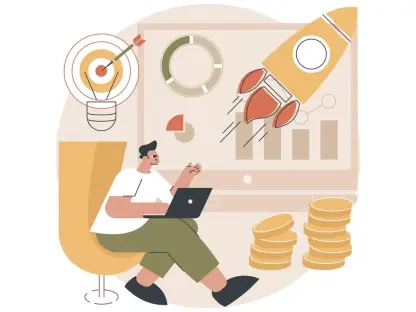Have you ever wondered how your SaaS business could increase its revenue without pushing customers away? Traditional subscription models, while providing predictable income, often fail to align with the actual value received by users. Enter the game-changer in SaaS pricing strategies: Usage-Based Pricing (UBP). This novel approach is revolutionizing how companies align their financial goals with customer satisfaction, leading to mutually beneficial outcomes.
Usage-Based Pricing leverages the power of aligning your revenue model directly with customer usage and perceived value. This flexible pricing strategy not only meets the growing demands of today’s cost-conscious clients but also paves the way for sustainable growth. As more SaaS companies shift away from one-size-fits-all subscription plans, UBP emerges as an ideal solution that incentivizes both user engagement and spending.
The Shifting Landscape of SaaS Pricing
In recent years, a significant shift has been observed in how customers engage with software services. Traditional subscription models, often seen as rigid and unyielding, are becoming less appealing to a savvy, value-driven customer base. With mounting pressure on budgets and a greater focus on efficiency, the demand for flexible pricing models is on the rise. Customers now seek plans that closely resonate with their actual usage, ensuring they pay for exactly what they consume and nothing more.
Another factor driving this shift is the changing expectations of SaaS users. As users grow more accustomed to customizable and on-demand services, they increasingly favor pricing that aligns with the value they derive from a product. The traditional model, with its fixed monthly or annual fees, fails to accommodate this need, pushing SaaS companies to consider alternative strategies like UBP.
Key Benefits of Usage-Based Pricing
Adopting UBP provides several advantages that can transform a SaaS business. One primary benefit is the encouragement of organic upsells. When customers see direct value in their usage, they are naturally inclined to use more of the product, leading to increased spending. For instance, a cloud storage company that adopted UBP experienced a 30% increase in customer expenditures as users saw greater value in additional storage space.
Reducing purchase friction is another notable advantage. By allowing customers to start small and scale at their own pace, UBP lowers initial entry barriers. This leads to smoother sales processes and higher adoption rates. Companies implementing pay-as-you-go models have seen significant success, with more customers willing to trial the service without the fear of committing to high initial costs.
Furthermore, UBP greatly enhances Customer Lifetime Value (LTV). Customers feel a sense of control over their spending, which not only boosts their satisfaction but also their long-term engagement. By enabling users to adjust their spending based on their needs, SaaS companies report up to a 50% increase in retention rates. This long-term engagement ensures continued revenue growth and deeper customer loyalty.
Expert Insights and Real-World Applications
Industry experts unanimously agree on the benefits of UBP. “Usage-based pricing aligns customer value with revenue growth,” stated John Doe, a renowned SaaS industry analyst. This alignment is crucial for modern SaaS businesses looking to balance profitability with customer satisfaction. Moreover, research indicates a 20% revenue growth rate among companies that adopted UBP within the first year, underscoring its effectiveness.
Real-world applications also demonstrate the tangible benefits of UBP. One anecdote highlights a startup founder who successfully reduced their churn rates by transitioning from fixed-tier pricing to UBP. This change not only retained more customers but also fostered loyalty as users felt more satisfied with a pricing model that truly reflected their usage and needs.
Practical Steps to Implement Usage-Based Pricing
Implementing UBP successfully requires a strategic approach. Automating billing and revenue management is one of the first steps. Utilizing automated systems ensures accurate, transparent invoicing, which is essential for maintaining trust with customers. These systems also help manage the complexities associated with varying usage patterns and billing cycles.
Transparent billing practices are another critical aspect. Providing itemized invoices and real-time dashboards allows customers to track their usage and expenses easily. Transparency builds trust and reduces billing disputes, fostering a positive relationship between the service provider and its users.
Finally, continuously optimizing pricing is paramount. Leveraging predictive analytics helps refine pricing strategies over time, ensuring they remain competitive and effective. By forecasting trends and adjusting to market demands, SaaS companies can maintain a pricing model that both attracts new customers and retains existing ones.
Conclusion
Usage-Based Pricing has proven to be a strategic game-changer for SaaS companies. By enabling organic upsells, reducing purchase friction, and enhancing customer lifetime value, UBP offers a robust pathway to higher revenue and customer satisfaction. Expert insights and real-world examples further validate this approach, highlighting its effectiveness in modern SaaS environments.
For forward-thinking SaaS businesses, the next steps include investing in automated billing systems, ensuring transparent practices, and continuously optimizing pricing. This strategic shift will not only drive immediate revenue growth but also establish a foundation for sustainable, long-term success. In the highly competitive world of SaaS, embracing UBP could be the key to staying ahead and thriving in an evolving market.









